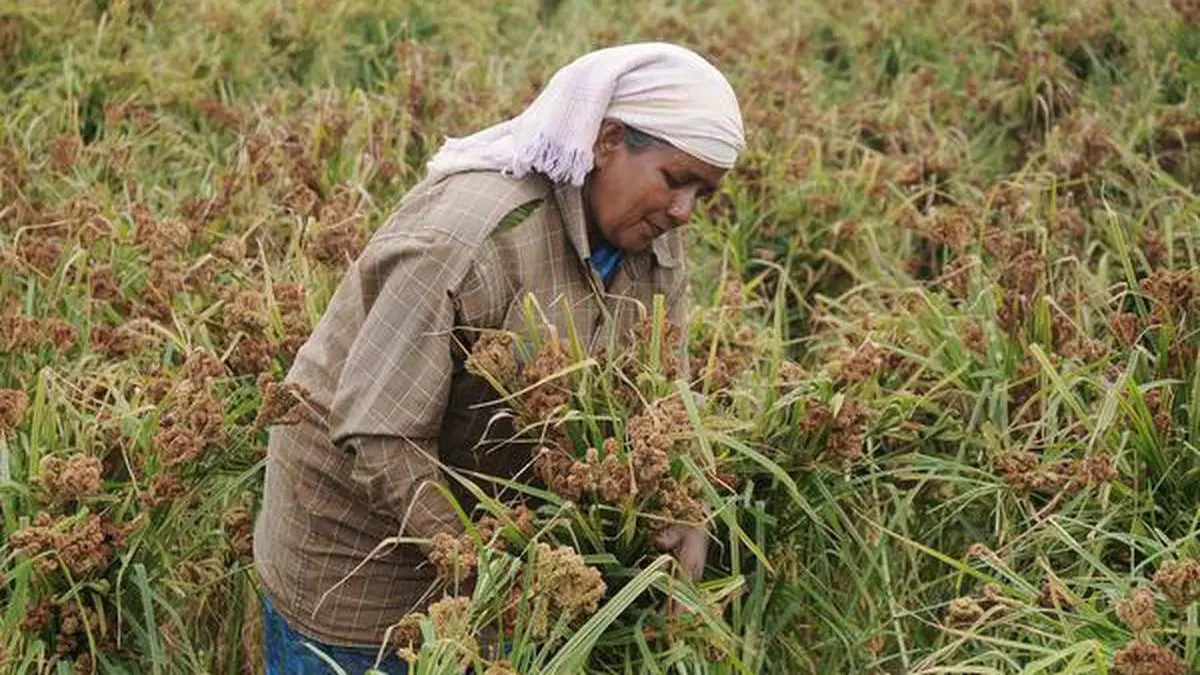Can agricultural value chains resolve the agrarian crisis and build just rural futures?
The Covid pandemic and the largest movement of people since the partition of India has shown that the vast majority of vulnerable urban dwellers prefer to be in rural areas during the crisis. The well-established phenomenon of growth with unemployment now shows that the demographic transition from agriculture to industry and from rural areas to cities cannot be the answer. Solving the crisis in agriculture and rural areas is a growing need.
Over the decades, a strong case has grown in favor of opening agricultural markets to greater competition, improving infrastructure through private investment, and allowing farmers the opportunity to achieve better returns on produce. Not a new view, and not only by policy makers and market-friendly companies but also by a section of farmers. Most notably, the late Sharad Joshi of the Shetkari Sanghatana opposed restrictions on the free movement of goods in and out of the country.
supply chain contribution
the Three agricultural laws enacted by Parliament in 2020 It was pursuant to this position. However, the Farmers protest led to the undoing of the law. While things remain in limbo, the time is right to explore whether access to agricultural value chains, particularly global networks, will help vulnerable rural communities – small, marginal farmers and the landless.
Global value chains in food and agriculture are playing an increasingly important role in global and national economies. The US government’s Department of International Trade estimates that global supply chains account for more than 76% of global trade. About a third of global food and agricultural trade takes place within global value chains. Before it reaches the final consumers across borders, agricultural products or raw materials are processed and added with other commodities, which will be processed in different geographies or countries. Global agricultural value chains (GAVC) therefore refer to the relationships that connect producers, processors, traders, retailers and consumers across countries. A vivid example of this is how wheat is grown in Australia and Ukraine, ground into flour in Indonesia and Turkey, and then exported to make pasta in China and bread in Africa and West Asia.
Also read: Organic farming: a solution towards sustainable farming
In the face of an old system of market procurement riddled with opacity, corruption, and vested interests in Agricultural and Livestock Market Committees (APMC), the ability to access GAVCs can inject new capital into agriculture, enable crop diversification and create new pathways for effective procurement and build win-win stories for the rural community.
Power imbalance
However, caution must be exercised. We must not forget the colonial history of GAVCs, as we saw in the triangular trade. Humans from Africa were traded as slaves to new settler colonies in the Americas, and paid for the supply of goods to Europe. Colonial powers imposed similar relations on Asia in favor of Europe. While not as oppressive as in the colonial past, the asymmetry of power continues to exist.
Be it through contract farming as done in the past by the cultivation of indigo in eastern India, which began in the late eighteenth century, or the cultivation of tobacco as enforced by the Imperial Tobacco Company, now known as International Trade Centre, or more recently the cultivation of tomatoes and potatoes by PepsiCo in Punjab, farmers over the centuries have seen how the imbalance of power lies in the interest of the contracting company. The presence of Farmer Producer Companies (FPOs) and cooperatives helps ensure integration into the GAVC, reducing harvest risk and helping to increase bargaining power. However, the existence of farmer groups by itself is not sufficient to counteract the unequal balance of power with the contracting company and the HIC controlled by the multinational corporations.
The association with GVAC does not benefit the landless workers and small and marginal farmers. These communities also face social exclusion because they are primarily Dalits and other backward tribes and castes. Association with the GVAC allows local elites to reorganize forces against workers’ interests and female farmers. Working women, for example, are excluded from handling heavy machinery and relegated to unskilled physical labour.
challenge for Indian farmers
GAVCs are a terrain of fiercely competing interests where small farmers and landless workers have little or no bargaining power. Therefore, while opening the agricultural market to GAVCs may lead to some growth in the rural economy, it will not address the exclusions and discrimination faced by vulnerable rural communities; In fact, it may aggravate it.
Also read: Celebrating the successes and advancements of Indian agriculture
For agricultural workers in India or the Global South, the challenge is to claim land, labor and other social rights as a precondition for securing benefits from their inclusion in AVCs. Without this, given the competitive advantage of multinationals and firms that orchestrate value creation across borders, the tendency to reduce the prices paid for products and supplies only leads to a race to the bottom, creating conditions for lower wages and bypassing even existing labor regulations. This is where the strong state comes in to defend its weakest class—by ensuring, at the very least, land reforms, guaranteeing household land to all, establishing a strong system of workers’ rights and strengthening the provision and delivery of public services. Plans to ensure health, education, food security and employment.
On such a secure foundation, collective economic efforts based on feminist perspectives can secure a starring role for vulnerable rural communities and build an equitable rural future for all. From a position of strength, vulnerable communities can work with global agricultural value chains to ensure social and environmental justice.
The author is the Executive Director of ActionAid
